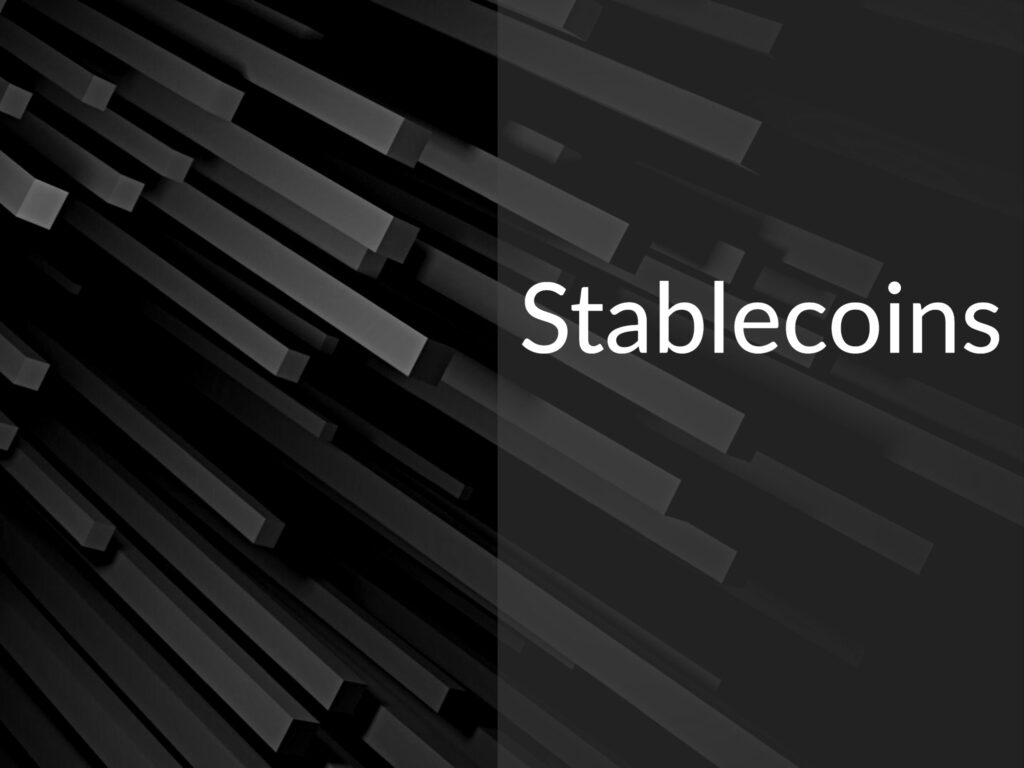How stablecoins are similar and different from other monetary assets. What are stablecoin risks. Why central bank digital currencies are one of the biggest threats to stablecoins.

Topics covered include:
- Why the Federal Reserve and other central banks are exploring issuing their own digital currencies
- What is the difference between public and private money
- How deposit insurance and central bank actions prevent runs on private money
- How money market mutual funds are a type of stablecoin
- How true stablecoins and algorithmic stablecoins differ
- What is driving the demand for stablecoins
- What are the risks of stablecoins
Show Notes
Taming Wildcat Stablecoins by Gary B. Gorton and Jeffery Zhang
Money Stock Measures – H.6 Release—Board of Governors of the Federal Reserve System
Top Stablecoin Tokens by Market Capitalization—CoinMarketCap
Report on Stable Coins, November 2021—Various US Agencies
The Quest for a Truly Decentralized Stablecoin by Brady Dale—Coin Desk
Cryptocurrency Doesn’t Amount to Much by Steve H. Hanke and Matt Sekerke—The Wall Street Journal
Episode Sponsors
Related Episodes
319: Here Come Central Bank Digital Currencies
339: How To Make Money with BlockFi, Dai, and the Evolving DeFi Ecosystem
333: How The Covid Shock Nearly Destroyed The Financial System
Transcript
Welcome to Money For the Rest of Us. This is a personal finance show on money, how it works, how to invest it, and how to live without worrying about it. I’m your host, David Stein. Today’s episode, 373. It’s titled, “Are stablecoins safe? Should you own them?”
Public versus Private Money
Last month the U.S. Federal Reserve released a research paper on the possibility of the central bank issuing its own digital currency. The paper defined a central bank digital currency (CBDC) as a digital liability of the Federal Reserve. A digital IOU.
The paper dollar is also a liability of the Federal Reserve. It’s an IOU. It doesn’t pay interest, it doesn’t ever mature, but if you look at the Federal Reserve’s balance sheet, on the right side, under liabilities, are dollar bills. On the left side, under assets, are Treasury bonds mostly, and a very small amount of gold or gold certificates.
The dollar used to be a stablecoin, in that it was backed by assets, with the idea that it would hold its value. That’s different than stablecoins today. A true stablecoin is collateralized and backed by assets but can be exchanged for a dollar or some other currency at par, at its set stable price, typically one dollar. But a dollar is always worth a dollar because that’s what it is.
Paper currency is public money. It’s issued by an independent government agency; an independent government agency is part of the U.S. executive branch, but day-to-day actions are not controlled by the president of the United States. He can’t just fire the head of independent agencies. Other examples of independent government agencies are the U.S. Post Office, the Social Security Administration, and NASA.
In today’s modern economy, most money is digital, but it is not public money. It’s not issued by the government. The most common form of digital money is checking and savings accounts and a banker credit union. When you go to the bank, you deposit cash, public money, and then the bank gives you a receipt, and reflected on the account records, if you go online, you’ll see the deposit. But that deposit represents an IOU from the bank. It’s a liability of the bank. They owe you money.
We don’t think of bank deposits as private money, because we’re confident the money is safe because of government deposit insurance. In the U.S, the FDIC, which is also an independent government agency, oversees deposit insurance, and individuals are protected up to $250,000 per account. Now, prior to deposit insurance, there were periodic bank runs. Depositors worried that their money wasn’t going to be able to be redeemed if they wanted it. That the bank was failing, that the bank had too many loan defaults.
As a Money For the Rest of Us Plus member, you are able to listen to the podcast in an ad-free format and have access to the written transcript for each week’s episode. For listeners with hearing or other impairments that would like access to transcripts please send an email to jd@moneyfortherestofus.com Learn More About Plus Membership »
